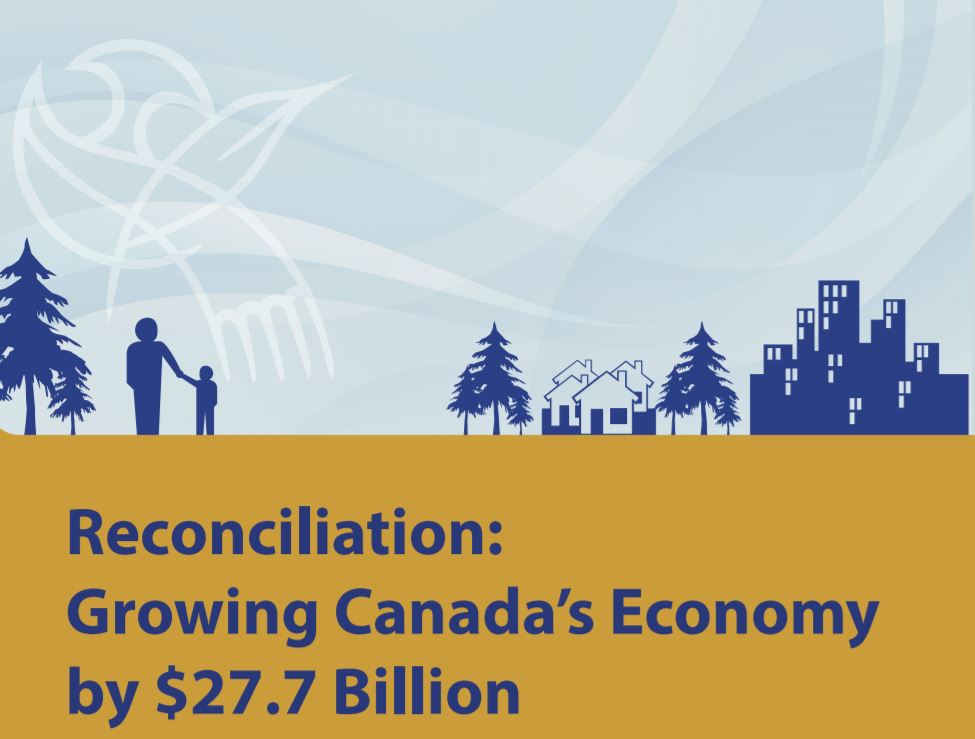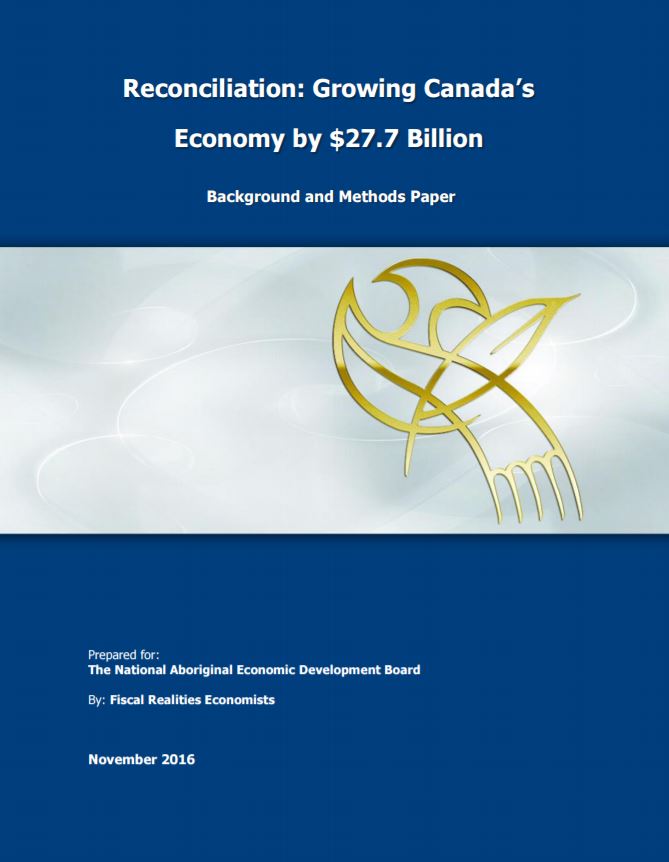National Reconciliation: The $27.7 Billion Argument for Ending Economic Marginalization
Op-Ed by Dawn Madahbee Leach and Chief Terrance Paul
On December 14, 2015, on the occasion of the release of the Final Report of the Truth and Reconciliation Commission, the Right Honourable Justin Trudeau, Prime Minister of Canada, made the following statement: “…we will, in partnership with Indigenous communities, the provinces, territories, and other vital partners, fully implement the Calls to Action of the Truth and Reconciliation Commission.”
At the time, the National Indigenous Economic Development Board applauded the Prime Minister’s statement, and today we acknowledge his on-going commitment to moving forward on a path of reconciliation based on recognition of rights, respect, and partnership.
And it is a path that all Canadians – both Indigenous and non-Indigenous – must walk together.
For Indigenous peoples, national reconciliation is critical to addressing the wrongs of the past, improving the socio-economic outcomes of today, and restoring the self-sufficiency and independence of our communities and governments.
The National Indigenous Economic Development Board also believes that national reconciliation is not possible if Indigenous peoples continue to be excluded from sharing in Canada’s prosperity: an objective that will not only improve the socio-economic outcomes of Indigenous peoples but, according to our analysis, will provide significant benefit for all Canadians.
Today, the National Indigenous Economic Development Board released a comprehensive report, Reconciliation: Growing Canada’s Economy by $27.7 Billion, that demonstrates the potential economic benefit of reconciliation – both in terms of what is being lost to Canada and the value of what can be gained by all Canadians.
Our report concludes that the continued economic marginalization of Canada’s Indigenous peoples is costing our economy $27.7 billion each year. In other words, action to achieve economic reconciliation – equal access to financial services, capital and other business supports, adequate community infrastructure and housing, and connectivity for Indigenous communities, as well as equal access to quality education and training – can increase Canada’s Gross Domestic Product by 1.5%. This is greater than the Government’s own estimates on the impact of its infrastructure investments.
Considering the condition of the global economy and a looming demographic challenge, a growing Indigenous economy and an increase in labour force participation among Indigenous peoples could represent a much needed shot in the arm for a low-growth Canadian economy. Canada’s aging population means more workers are leaving the workforce now than are entering it. In contrast to the rest of Canada, the Indigenous population is young and growing fast. With almost half of Indigenous peoples under the age of 25, this young generation is critical to Canada’s future.
The federal government has made important investments, including $8.4 billion earmarked in its most recent budget to improve the socio-economic conditions of Indigenous peoples and their communities. We acknowledge the importance of these investments. However, the chronic and systemic underinvestment in Indigenous communities over the last decades is evident in the deplorable conditions many of our communities must endure: conditions that would be unacceptable to other Canadians.
Raising the socio-economic conditions of Indigenous peoples should be a matter of social justice and equality, and a nation as fortunate as Canada should not need a business case to address decades of historical wrongs. But Canadians must walk the path to reconciliation together – and our numbers show that there is nothing to fear and much to gain.
Reconciliation: Growing Canada’s Economy by $27.7 Billion – Some facts:
- If Indigenous peoples had the same education and training as non-Indigenous peoples, the resulting increase in productivity would mean an additional $8.5 billion in income earned annually by the Indigenous population.
- If Indigenous peoples were given the same access to economic opportunities available to other Canadians, the ensuing increase in employment would result in an additional $6.9 billion per year in employment income and approximately 135,000 newly employed Indigenous peoples.
- If the poverty rates among Indigenous Canadians were reduced, the fiscal costs associated with supporting people living in poverty, would decline by an estimated $8.4 billion annually.
- Overall, if the gap in opportunities for Indigenous communities across Canada was closed, it would result in an increase in GDP of $27.7 billion annually or a boost of about 1.5% to Canada’s economy.
The National Indigenous Economic Development Board is a Governor in Council appointed board mandated to provide strategic policy advice to the federal government on issues related to Indigenous economic development.
Dawn Madahbee Leach and Chief Terrance Paul


